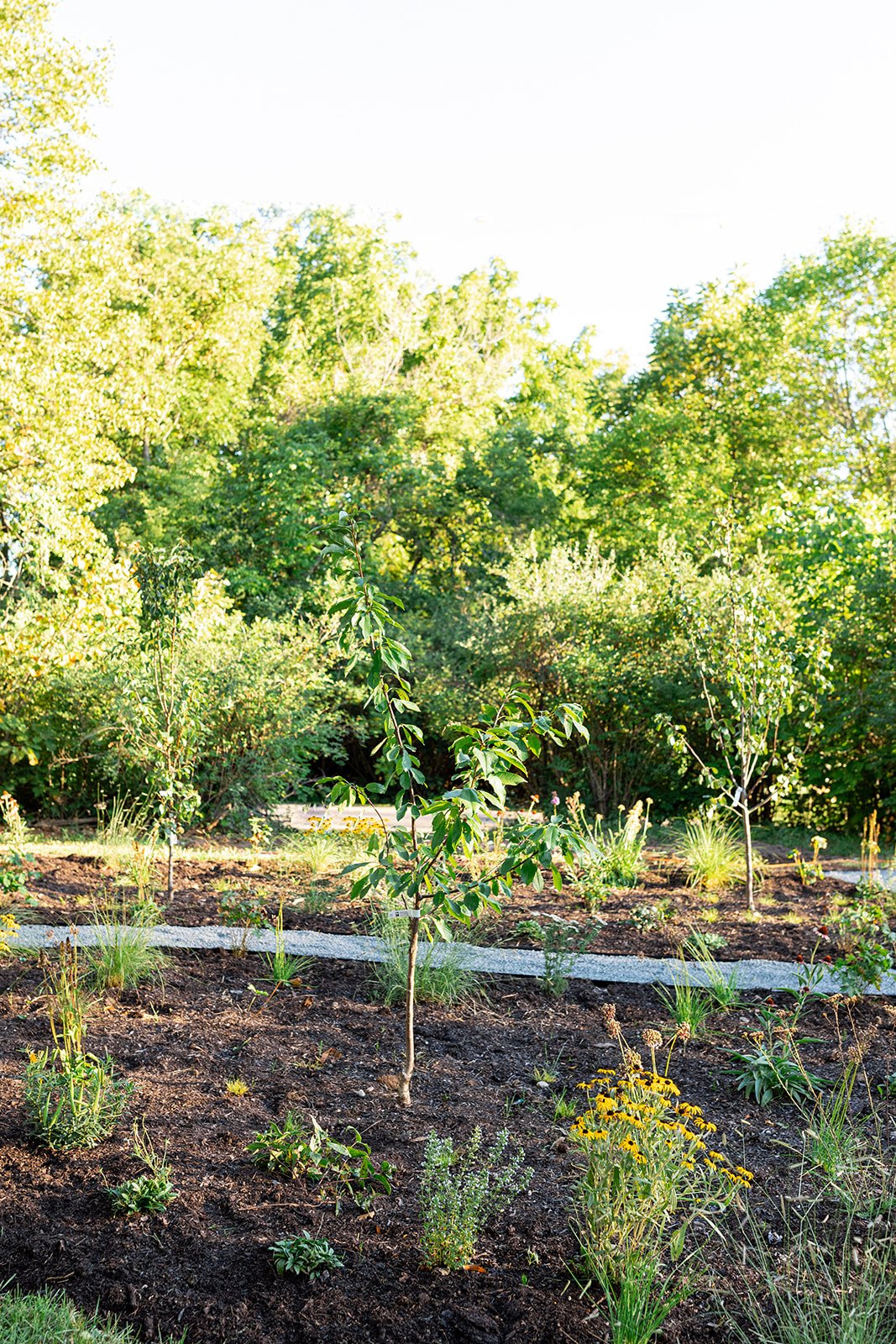How To Design A Mini Orchard In Meadow-Style
If you’ve gained confidence in the garden and you are ready for the next step in transforming your property into an edible eden, add a mini orchard to your list of garden goals. Your yards don’t have to be just a plot of grass you have to mow once a week; you could walk out your back door into an outdoor oasis. You can utilize your space more efficiently and grow your own veggies, herbs, and fruits, too.
Plus when you grow your own food, you have the peace of mind knowing it was grown without harmful chemicals – many fruits fall on the EWG’s “Dirty Dozen” list, a list of the 12 types of produce with the most pesticide residue. Ready to create your own mini orchard? Read on for step-by-step directions
Why You Should Plant A Mini Orchard
Cultivating a mini orchard in the meadow-style is a beautiful and sustainable way to grow fruit-bearing trees that enhance the natural beauty of your outdoor space. The meadow-style design approach not only promotes biodiversity but also encourages a harmonious coexistence between fruit trees and the surrounding environment.
Here at Oglesby Gardens, we recently added a mini orchard to the front corner of our property. We have grown fruit trees in a traditional row style, but for our home, we wanted to enhance the landscape and create a more holistic environment in which the trees were planted, so we went with meadow-style. Here are a few key elements and steps.
How To Design A Mini Orchard In Meadow-Style
Selecting the Right Location
Begin by identifying the best location for your mini orchard. Ensure it receives ample sunlight, as most fruit trees thrive in full sun. You want 8+ hours of sun for the most fruit production. Consider the soil quality and drainage to provide an optimal growing environment for your trees. Avoid low-lying areas where water pools.
Choosing Fruit Tree Varieties
Research and select fruit tree varieties that are well-suited to your climate and soil conditions. Opt for a mix of apple, pear, cherry, and plum trees to enhance biodiversity and stagger your harvest seasons. Choose disease-resistant varieties to minimize the need for pesticides. While doing your research, check to see what varieties are needed for cross-pollination.
Layout and Spacing
Plan the layout of your mini orchard with a meadow-like feel in mind. Instead of planting in straight rows, consider a more natural arrangement. Allow for ample space between trees to promote good air circulation and prevent overcrowding. This not only aids in pest control but also creates a visually appealing landscape.
We designed our mini orchard in a right triangle that corners our property. Since we host classes and have a lot of visitors at Oglesby Gardens, we added a stone pathway to easily walk through the trees.
Meadow/Understory Plantings
Integrate native grasses, wildflowers, and ground covers as understory plantings in your mini orchard. These add aesthetic value and contribute to biodiversity by attracting beneficial insects, pollinators, and other wildlife. Select plants that are compatible with your fruit trees and create a diverse ecosystem.
Mulching and Soil Enrichment
Apply a thick layer of organic mulch around the base of your fruit trees to retain moisture, suppress weeds, and enhance soil fertility. Consider incorporating compost and other organic matter into the soil to provide essential nutrients for the trees. Healthy soil is the foundation for a thriving orchard.
Watering and Irrigation
Implement an efficient irrigation system or a watering schedule to ensure your fruit trees receive adequate water. Drip irrigation is a great option as it delivers water directly to the root zone, minimizing water wastage – when you’re watering an orchard, every drop counts! Monitor soil moisture levels regularly during the first year of planting and subsequently, especially during dry periods. Irrigation is not a necessity, especially as the trees become more established, but it does tend to be easier and more consistent.
Pruning and Maintenance
Regular pruning is crucial for maintaining the health and productivity of your fruit trees. Remove dead or diseased branches, and shape the trees to encourage proper airflow and sunlight penetration. Consult with a fruit tree professional on proper pruning techniques, especially in the first year. Make sure you are consistent with routine maintenance tasks like weeding and pest control.
Harvest and Enjoy
As your mini orchard matures, relish the joy of harvesting fresh, homegrown fruit. Share the abundance with friends and family, or consider preserving the harvest through canning, drying, or making delicious fruit-based treats. Many fruit tree harvests are towards the fall season, so it provides us with fall fruits and allows us to extend our growing season after most of the berries have run their course.
I promise, you’re gonna love the feeling of harvesting your own cherries for pie, crunching into a juicy apple right off the tree, and adding fresh sliced pears to a refreshing salad.
If you’re considering adding a mini orchard to your property and want someone to bounce ideas of off, book a consult with me and we can talk design, plant selection, and installation process, if you’re local. Let’s get growing!
Year one











